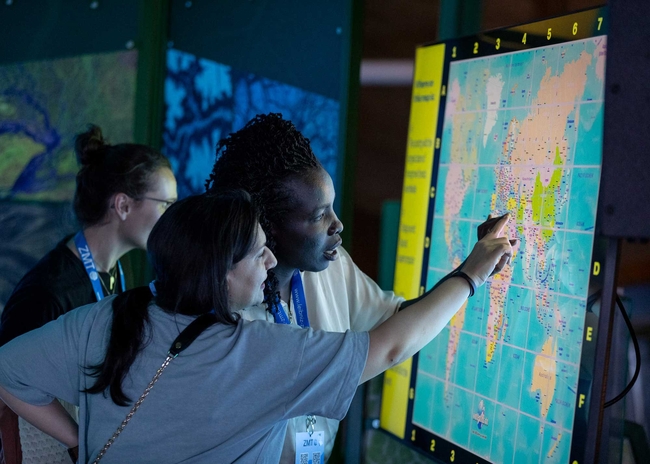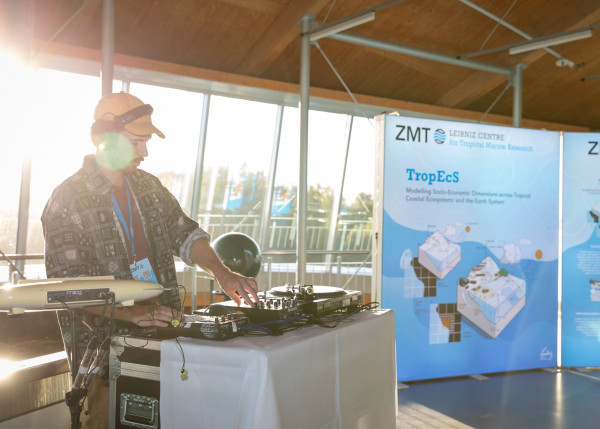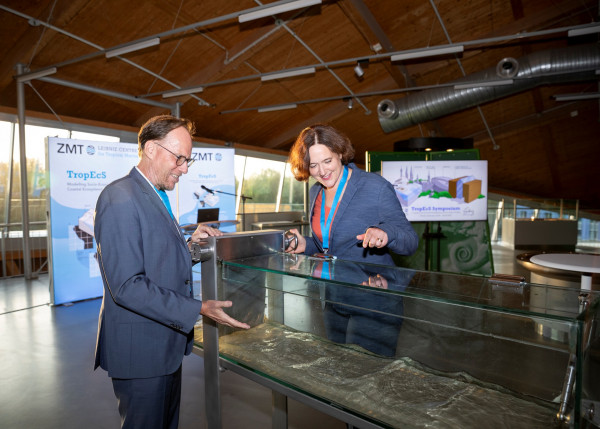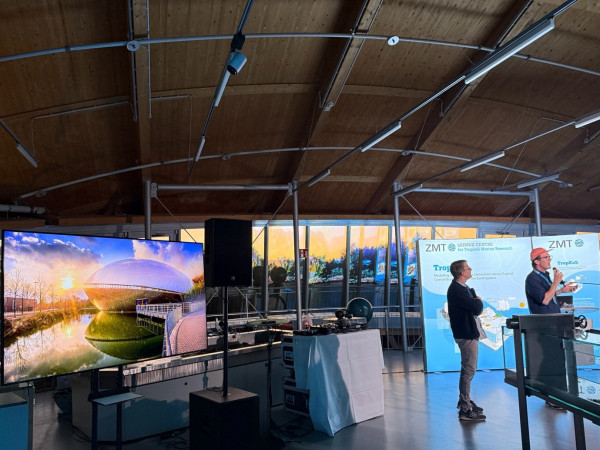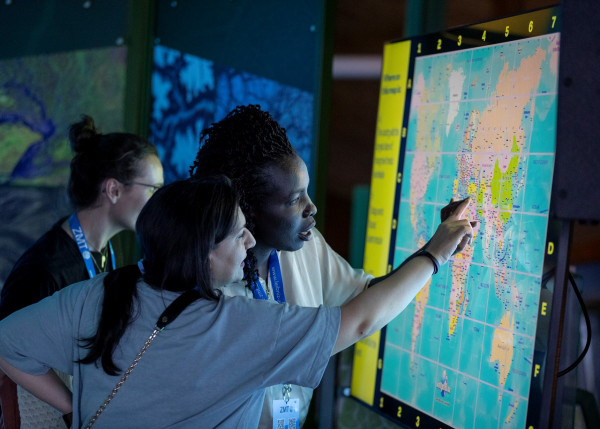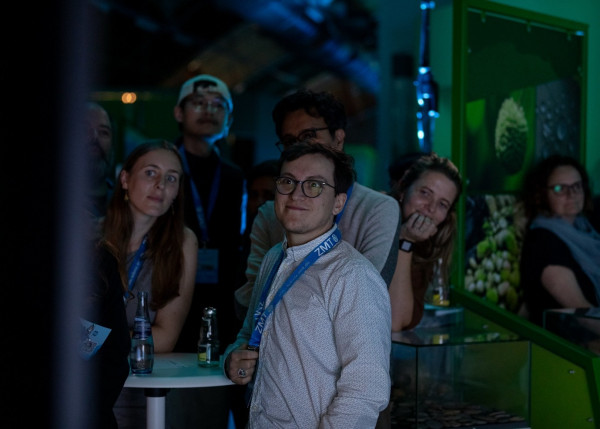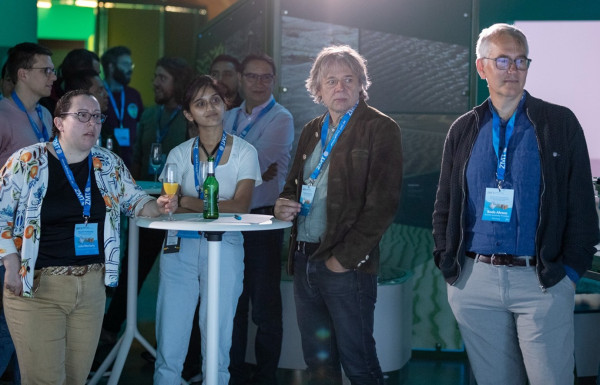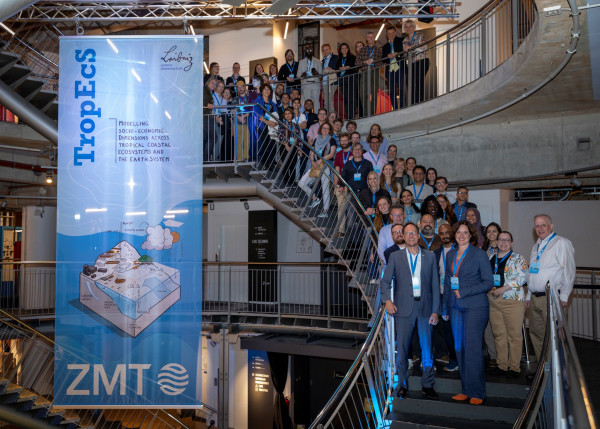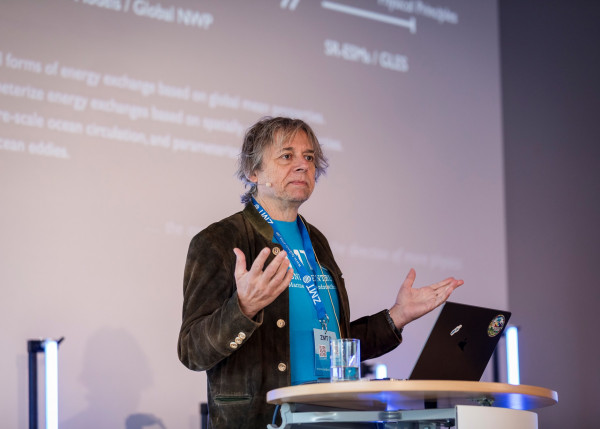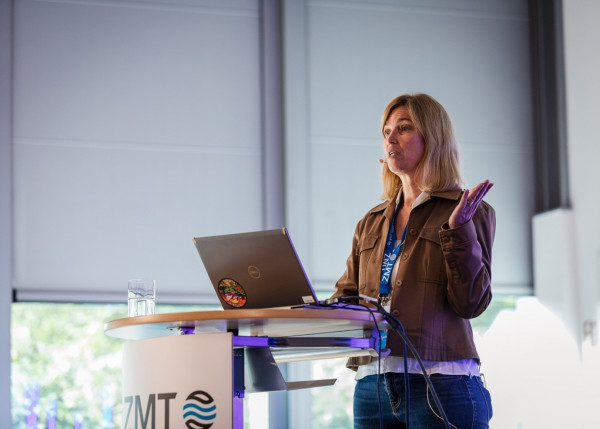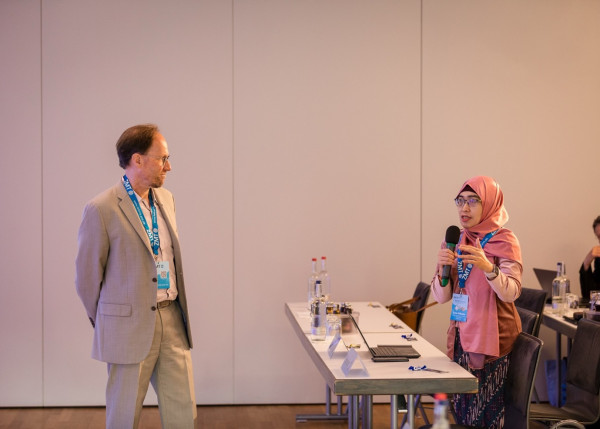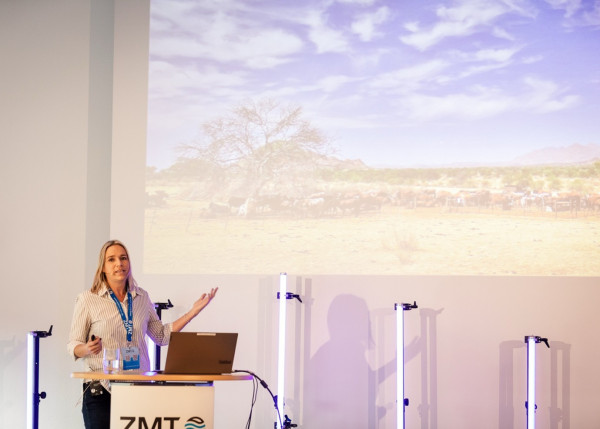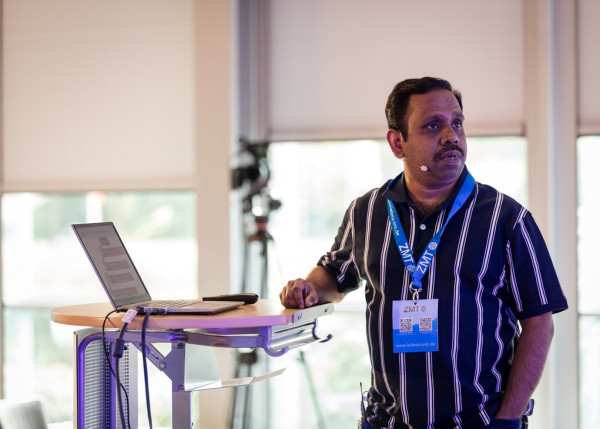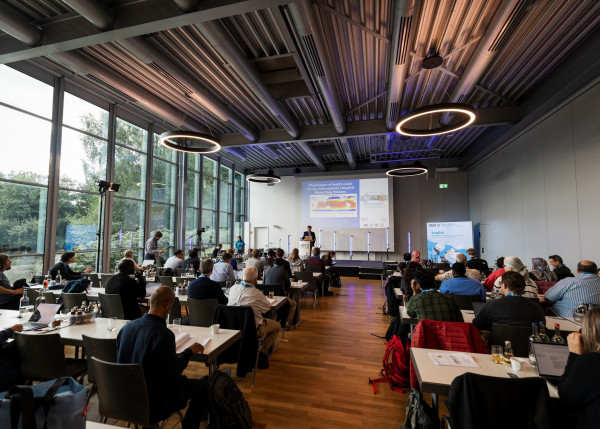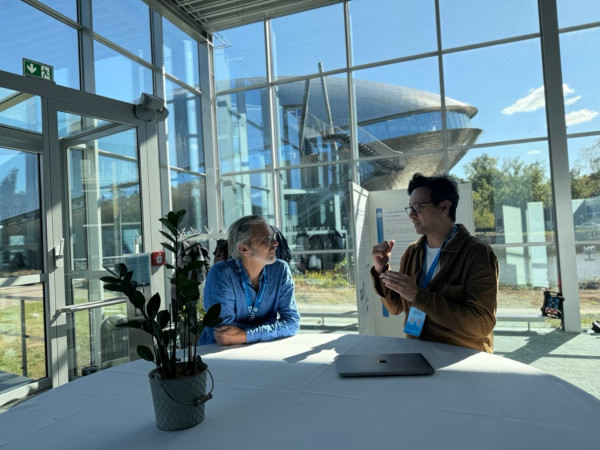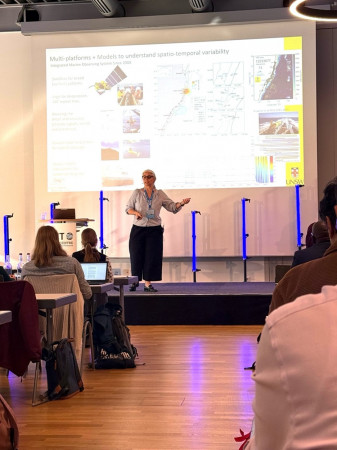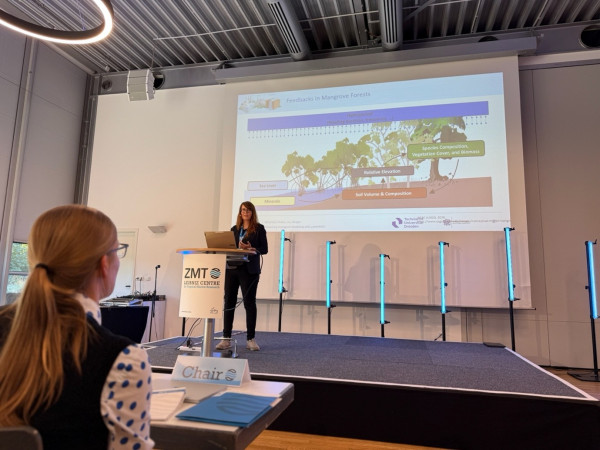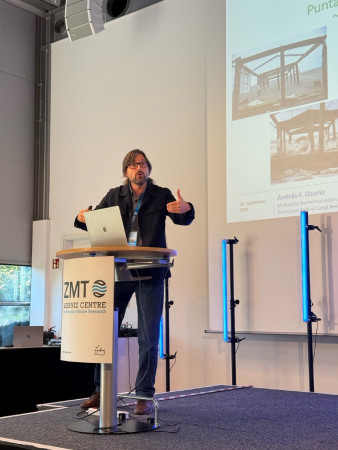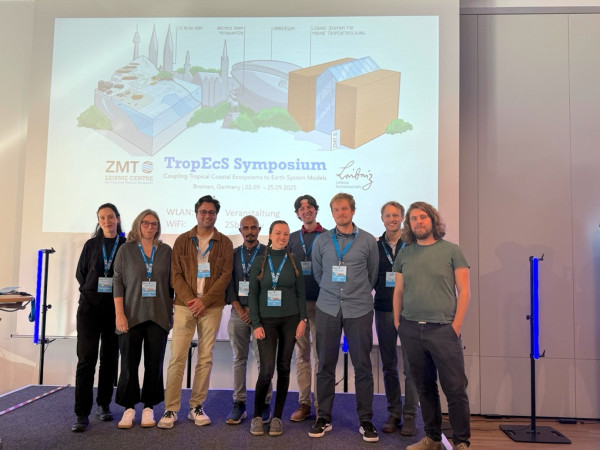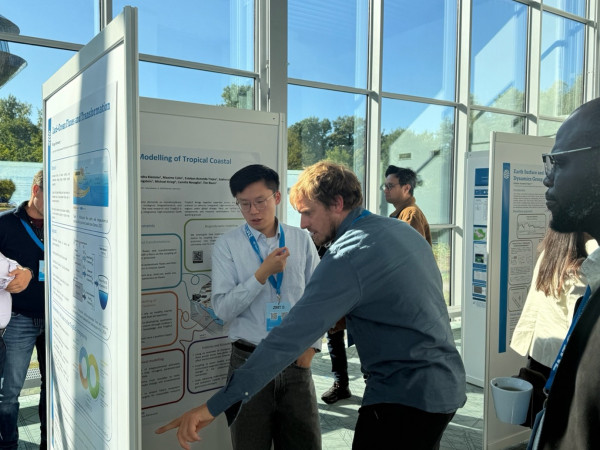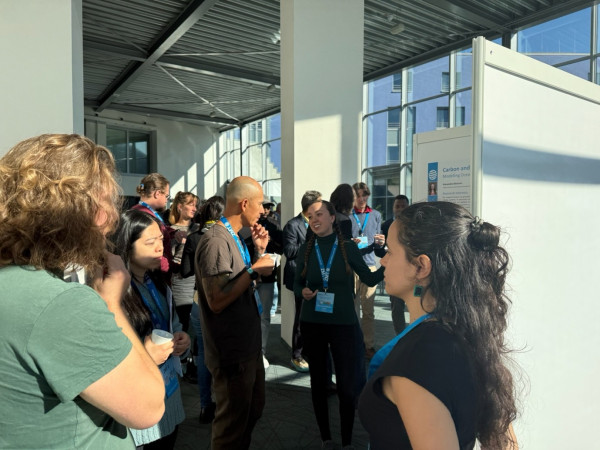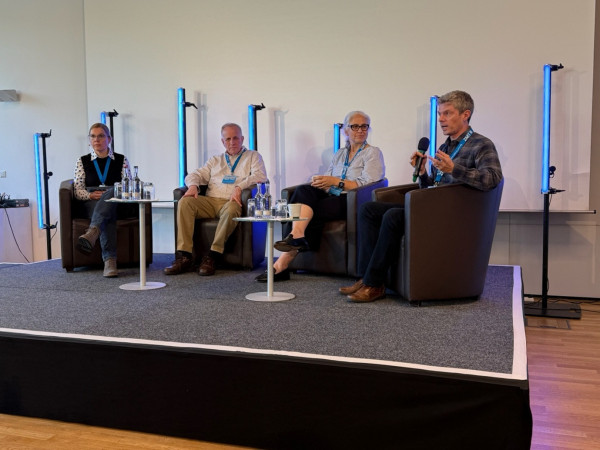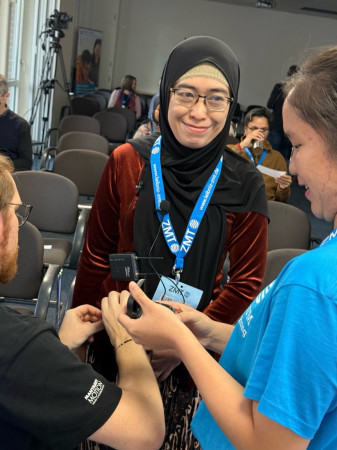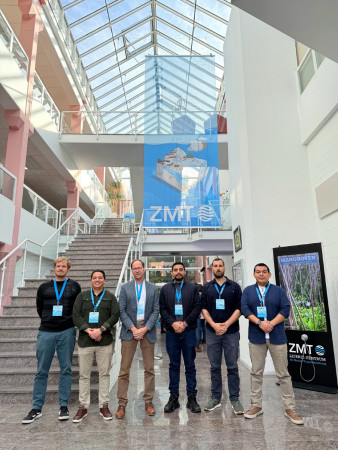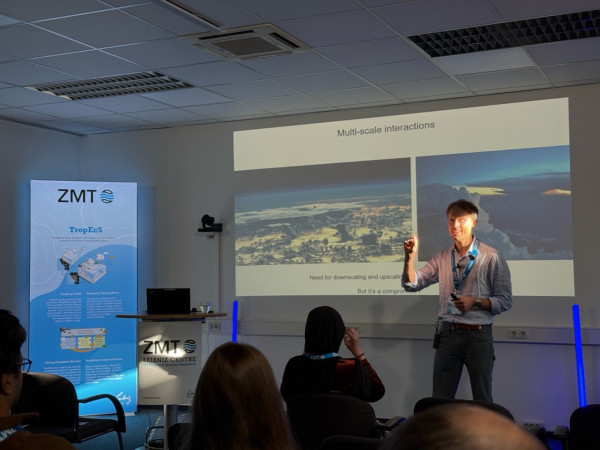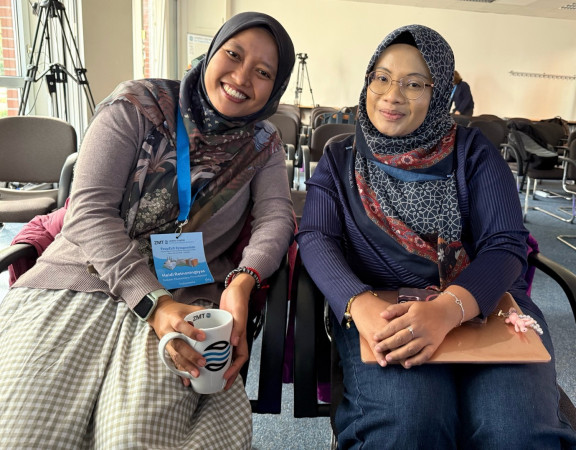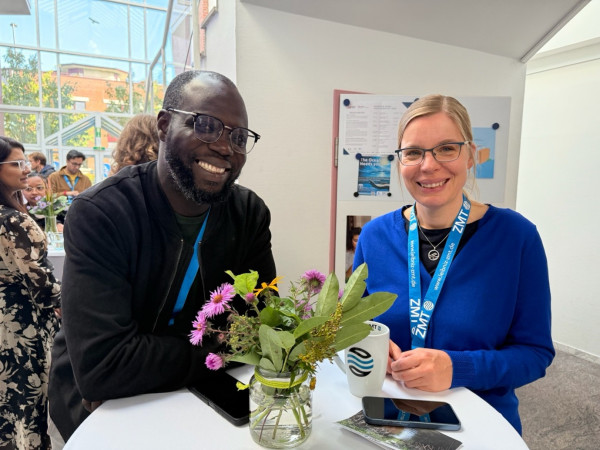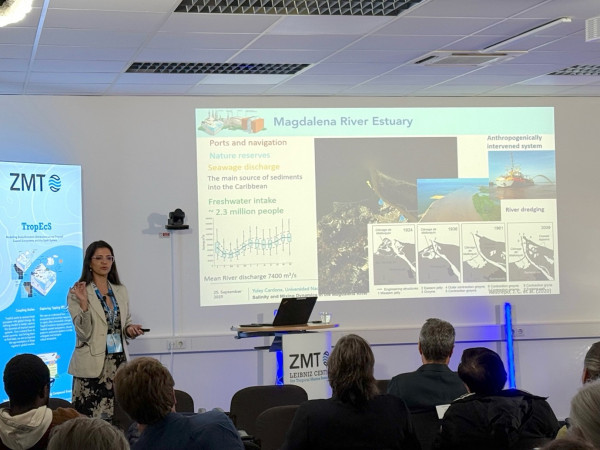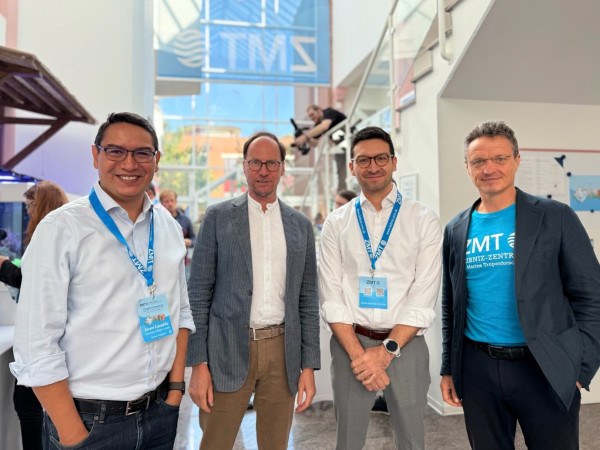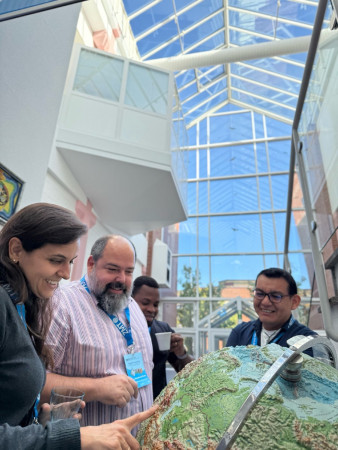24/10/2025 | This September, the ZMT organised and hosted the TropEcS Symposium on Earth System Modelling. Over three days, more than 100 international experts, early-career researchers, colleagues, and partners from tropical regions – from Indonesia to Peru – gathered in Bremen to discuss how tropical coastal ecosystems can be better integrated into global Earth System Models. The symposium also marked the official launch of ZMT’s new institute extension (Sondertatbestand) TropEcS – Modelling Socio-Economic Dimensions across Tropical Coastal Ecosystems and the Earth System.
What are Earth System Models?
Earth System Models are essential for understanding climate change. They link atmosphere, ocean, land, biosphere and cryosphere, and form the basis for climate assessments that inform global policy. Yet many models still fall short when it comes to regional processes such as land–sea fluxes, coastal dynamics, or socio-economic interactions. “Models of the next generation must go beyond physical feedbacks to capture ecological tipping points, the vulnerability of tropical coasts and socio-economic dynamics – particularly those affecting communities in the Global South,” emphasised symposium coordinator Dr. Julian Lilkendey.
Impressions from the TropEcS Symposium
Icebreaker at Universum® Science Center
The Universum® Science Center provided an exceptionally fitting setting for the symposium’s icebreaker reception. Surrounded by interactive exhibits and striking physical models – from wave machines to planetary simulations – science met tangible experience. Participants explored, through real models, the very processes they normally simulate digitally in Earth system models: the intricate feedbacks between atmosphere, ocean, and coasts. The wave model, in particular, vividly demonstrated how wave-driven turbulence shapes coastal dynamics – a central theme of the symposium. To top it off, the spirited science quiz hosted by Tom and Darren – featuring questions on Bremen, Earth System Modelling, and everything in between – broke the ice completely and set a warm, collegial tone for the days that followed.
DJ Biyotob (Tobias Poprick), Alumnus der Mangrovenökologie-Arbeitsgruppe des ZMT | Foto: Jan Meier, ZMT / DJ Biyotob (Tobias Poprick), alumnus of ZMT’s Mangrove Ecology Working Group | Photo: Jan Meier, ZMT
Day 1 - Strengths and Limitations of Existing Earth System Models
The first day explored how global Earth System Models (ESMs) represent the interactions between land, ocean, and atmosphere – forming the scientific basis for predicting climate change. Keynotes by Prof. Dr. Bjorn Stevens (Max Planck Institute for Meteorology, Germany) and Prof. Dr. Veronika Eyring (German Aerospace Center – DLR and University of Bremen, Germany; Coordinating Lead Author of the IPCC Report) set the stage for discussions across meteorology, oceanography, and ecology, enriched by perspectives from the Global South. A dedicated session on regional models included a keynote by Prof. Dr. Yu-Heng Tseng (National Taiwan University, Taiwan) on multi-scale ocean–atmosphere coupling, while Dr. Dante Espinoza (Instituto del Mar del Perú – IMARPE, Peru) highlighted the socio-ecological importance of coastal upwelling systems along the Peruvian coast.
Bjorn Stevens (Max-Planck-Institut für Meteorologie, Deutschland) | Foto: Jan Meier, ZMT / Bjorn Stevens (Max Planck Institute for Meteorology, Germany) | Photo: Jan Meier, ZMT
Day 2 – Coupling Components
The second day focused on how ecological, physical, and biogeochemical models can be linked to better understand tropical marine ecosystems. Dr. Edward Gross (GEI Consultants, USA) opened with a keynote on new approaches to estimating ecological rates and transport processes – demonstrating how simplified models can uncover hidden dynamics and inform coastal management. Talks explored processes from plankton dynamics to fisheries and climate adaptation. Prof. Dr. Moninya Roughan (University of New South Wales – UNSW Sydney, Australia) gave a keynote on the East Australian Current, showing how high-resolution observations improve models of boundary currents. From the Global South, Dr. Lívia Sancho (Federal University of Rio de Janeiro – UFRJ, Brazil) discussed multi-ocean teleconnections and regional climate extremes, Dr. Siny Ndoye (Université Amadou Mahtar Mbow, Senegal) presented work on the physical modelling of the Canary Upwelling System, and Dr. Alonso Del Solar Escardó (ZMT) shared co-designed adaptation strategies for Peru’s coastal ecosystems. In a joint presentation titled “TropEcS Topics in a Nutshell,” senior ZMT scientists introduced their research on key model components - from land–ocean fluxes and nutrient dynamics to fisheries, social–ecological systems, and participatory modelling - illustrating the integrative scope of the new TropEcS programme.
Ken Andersen (DTU Aqua, Dänemark) und TropEcS Senior Scientist Subhendu Chakraborty (ZMT) | Foto: Julian Lilkendey, ZMT / Ken Andersen (DTU Aqua, Denmark) and TropEcS senior scientist Subhendu Chakraborty (ZMT) | Photo: Julian Lilkendey, ZMT
Day 3 – Scales and Socio-Economic Perspectives
The final day brought together natural and social sciences to explore how global change affects coastal societies. Prof. Dr. Erma Yulihastin (National Research and Innovation Agency – BRIN, Indonesia) opened with a keynote on extreme weather events and their growing frequency under global warming, followed by a keynote by Dr. Julia Moriarty (University of Colorado Boulder, USA) on modelling sediment and biogeochemical processes in data-sparse tropical regions. In the afternoon, Dr. Rob Dellink (Organisation for Economic Co-operation and Development – OECD, France) discussed socio-economic drivers of environmental pressures, Dr. Bruno Meirelles de Oliveira (AZTI Marine Research, Spain) examined resilience in tropical coastal social–ecological systems, and Dr. Marie Fujitani (Leibniz Centre for Tropical Marine Research – ZMT, Germany) concluded the day with a call to link models, data, and people to strengthen coastal resilience. The TropEcS Symposium concluded with a strong sense of momentum and collaboration — paving the way for new research partnerships and model integration efforts across tropical regions.
Erma Yulihastin (National Research and Innovation Agency – BRIN, Indonesien) kurz vor ihrer Keynote – rechts im Bild: Adeline Sulungbudi | Foto: Julian Lilkendey, ZMT / Just before the keynote by Erma Yulihastin (National Research and Innovation Agency – BRIN, Indonesia) – on the right: Adeline Sulungbudi | Photo: Julian Lilkendey, ZMT





